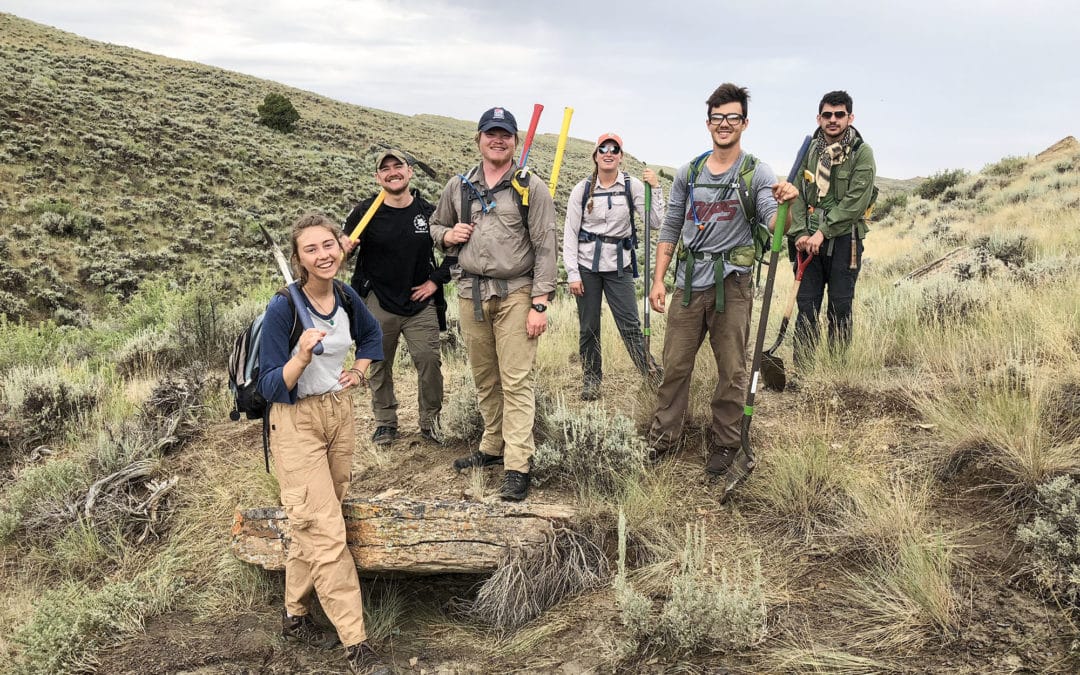Wyoming project students geared up for a day in the field.
Submitted by Brady Foreman (Western Washington University)
Ellen Currano (University of Wyoming), Marieke Dechesne (USGS), Regan Dunn (Field Museum), Brady Foreman (Western Washington University), and six undergraduates performed four weeks of field and laboratory research in southeastern Wyoming examining vegetation and fluvial responses to the Paleocene-Eocene Thermal Maximum (PETM), a major global warming event that occurred 56 million years ago. The research team measured numerous stratigraphic sections through fluvial, deltaic, and lacustrine sediments outside the tiny town of Hanna, Wyoming, and discovered and excavated fossil leaf sites. Students obtained over 500 geochemical samples at the field sites and processed them at the University of Wyoming. These data will help test hypotheses regarding the ancient global carbon cycle. Students also determined the ancient flow directions and conditions of the river and deltas from over 60 paleocurrent measurements, and obtained 30 sandstone samples for determining sediment source areas. The students also learned a new proxy methodology for estimating vegetation structure and density across ancient landscapes. They applied this technique to over 30 distinct stratigraphic levels spanning the PETM, and developed their own projects assessing the spatial variability of vegetation across the paleo-landscapes.

